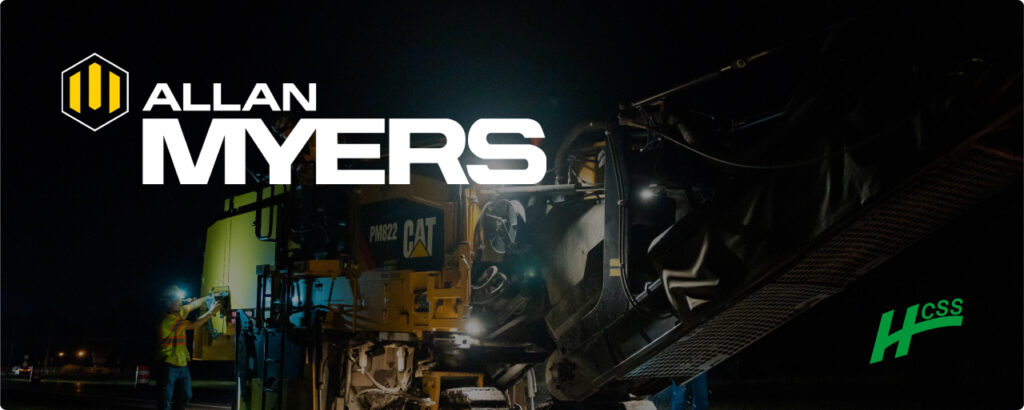After the mistake of choosing another construction software provider and becoming increasingly inefficient, the switch to HCSS introduced numerous benefits.

The Issue
As Russo Corporation expanded, its divisions operated with inconsistent systems, including fragmented estimating tools and workflows. A modern construction platform was implemented in 2020 to unify operations, but it failed to meet the needs of heavy civil construction. The platform lacked integration with Russo’s accounting system, had limited cost-code-level reporting, and created distrust in data due to workflow inconsistencies.
The Solution
After two years of challenges, Russo strategically turned to HCSS with HeavyBid, HeavyJob, HCSS Safety, Equipment360, and Dispatcher. The implementation was structured, collaborative, and tailored to Russo’s operations. A unified cost code system was also established to enable accurate, activity-based reporting across all divisions.
The Outcome
Russo now benefits from real-time job costing, improved field-to-office communication, and consistent workflows across divisions. Project managers can make proactive decisions with daily insights, safety management is streamlined, and equipment dispatch is more efficient. The company has regained confidence in its data, enabling smarter, more aligned growth without increasing software spend.
"Before HCSS, we didn't have a system that operated in real time, so we didn’t have an idea of our actual job cost until at least 30 days later. In our game, that’s too late.”
– Jake Brown, Division Manager, Russo Corp
Problems with the Previous Construction Management Platform
Russo Corporation is a heavy civil contractor with a broad range of capabilities—from sitework and foundations to utilities and blasting. With divisions operating in the Southeast and as far west as Texas, Russo takes on complex infrastructure and commercial projects, both as a general contractor and a subcontractor. However, as the company grew and diversified, it began to feel the friction of misaligned systems and workflows.
For years, some Russo divisions had used HeavyBid construction estimating software to estimate projects, while others relied on a mix of software tools. The result was a patchwork of processes and data silos. In 2020, amid the uncertainty of the COVID-19 pandemic and a general push toward digital transformation, Russo implemented a new construction management platform intended to unify the company’s operations.
Unfortunately, it didn’t work out as planned.

Software that Didn’t Fit the Work
The alternative construction software platform that Russo chose wasn’t designed with heavy civil construction in mind. Basic functions like job costing, payroll, and safety tracking required extensive customization. Over time, maintaining these workarounds became unsustainable.
Dawn Greer, the company’s controller, described the reality bluntly. “It just did not work for us,” she says. “It was not built for our industry.”
The platform lacked the ability to report at a cost code level, and the lack of integration with Spectrum, their accounting system, led to issues with syncing data. Foremen and project managers were limited to surface-level insights, and reporting showed costs by type (e.g., labor or equipment) but not by the specific work performed. That made it nearly impossible to pinpoint what was driving a project’s success or failure.
Russo’s divisions also operated differently. One might have used HCSS tools while another relied on spreadsheets or manual processes. According to Greer, this inconsistency caused friction and distrust in the data.
“There was a general lack of understanding and belief in the numbers,” Greer recalls. “If you’re not following the same process, it’s hard to trust the reporting.”

A Structured Return to HCSS
After nearly two years of trying to force this system to work, Russo decided it was time to rethink their software stack. Jake Brown, a Division Manager with hands-on experience in the field, became a key advocate for change.
“We were trying to make something work for us that didn’t work,” he says. “So we decided to go back to HCSS. It’s built for heavy civil, it integrates with our accounting software, and it has a good cost structure.”
After conducting a six-month vendor selection process, thoroughly vetting the market to ensure the right long-term fit, HCSS ultimately stood out for the reasons mentioned. The implementation plan spanned another six months, carefully paced to minimize disruption.
The goal of installing the new software was to create consistent, scalable processes across all divisions. That meant rolling out the full HCSS platform: HeavyBid for estimating, HeavyJob for field data and job costing, HCSS Safety for compliance, and Equipment360 and Dispatcher to manage their fleet and resources.
Implementation Done Right
Unlike the previous rollout, this implementation was structured and collaborative. HCSS partnered closely with Russo’s internal teams to create custom workflows that fit their needs.
“This was one of the most organized implementations I’ve ever been part of. It was on-site training, then live. We had a deadline and just hit it."
– Dawn Greer, Controller, Russo Corp.
Russo also restructured its cost code system to support activity-based reporting. Rather than track costs by vague categories, every code now corresponds to a specific scope of work. This change made it possible to analyze project performance with far greater accuracy.
“If we’re over on something, we can actually look at it now and say, ‘Why did this go over? Is it a one-time issue or is it something that keeps happening?” says Brown.

Real-Time Visibility and Company-Wide Confidence
With HCSS fully implemented, Russo has transformed how it runs projects, tracks costs, and makes decisions.
Project managers now have access to daily cost data, allowing them to make proactive adjustments in the field. Field personnel can enter time and quantities directly into HeavyJob, which flows seamlessly into payroll and job costing. That’s a big shift from the static, month-lagged reports of the past.
“We get to see every single day how a job is doing,” Brown comments. “It just makes it easier for everyone involved—foreman, PM, estimator—to work together because the information is live.”
Perhaps even more important is the alignment the system has created between divisions. For the first time, everyone at Russo is using the same platform, the same cost code structure, and the same workflows. That consistency has restored confidence in the data.
“It’s given everyone a common language,” says Greer. “Now, if we have a 10% overrun, we all know what that means and how to track it.”
Additionally, the benefits extend beyond job costing. The safety team now manages toolbox talks and safety forms digitally, planning talks as far as 6-8 months in advance. Equipment dispatch is more efficient, with visibility into where resources are and what’s available.
“We didn’t reduce our spend,” Brown notes, “but we got way more value from what we’re spending. And now the system works the way we do, not the other way around.”

A Stronger, Smarter Russo
For Russo, the move back to HCSS was a strategic decision to invest in systems that support how they actually estimate and operate as a cohesive company.
While the previous platform created roadblocks, HCSS has removed them. Job costing is faster, safety is proactive, and teams across the company are finally aligned on the same data. Russo is no longer stressing to make their system work; their system is working for the benefit of the company and its many workers.
That clarity is paving the way for even smarter growth.
Ready to take your operations to the next level? Explore HeavyJob today!


